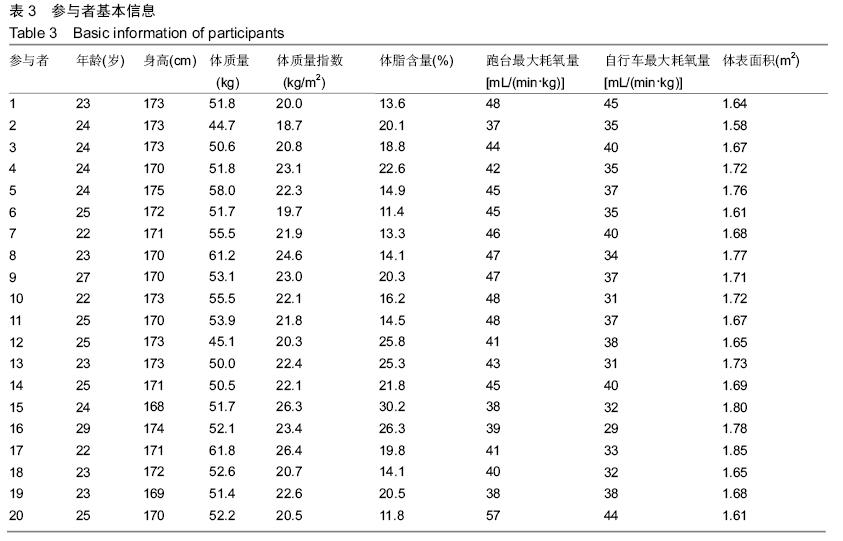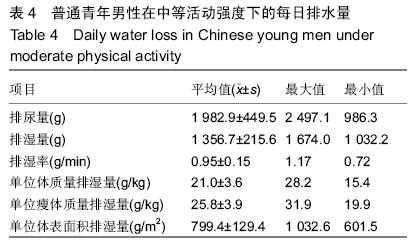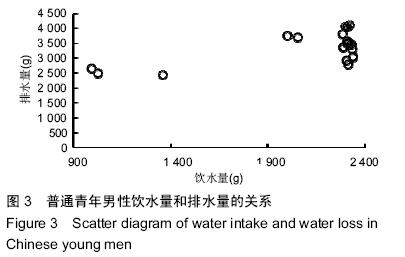| [1] Sawka MN, Cheuvront SN, Carter R 3rd. Human water needs. Nutr Rev. 2005;63(6 Pt 2):S30-39.[2] McArdle WD, Katch FI, Katch VL. Exercise Physiology: Nutrition, Energy, and Human Performance. Lippincott Williams & Wilkins, 2010.[3] Astrand PO. Textbook of work physiology: physiological bases of exercise. Human Kinetics, 2003[4] 中国营养学会.中国居民膳食指南[M].西藏人民出版社, 2008.[5] 马冠生.水[J].营养学报,2013,35(4):324-327.[6] World Health Organization. Nutrients in drinking water. 2005.[7] 彭春林,张雄伟,徐莺,等.上海市闵行区家庭人均饮水量分析[J].环境与职业医学,2014,31(3):203-206.[8] 马冠生,左娇蕾,张倩,等.深圳市某区成年居民饮水量及其影响因素分析[J].营养学报,2011,33(3):253-257.[9] 左娇蕾,马冠生.我国四城市成年居民夏季饮水状况调查报告[J].中国卫生标准管理,2011,2(2):59-62.[10] 黄贤仁,常翠青,靳沙沙,等.健康青年男性水适宜摄入量的初步研究[J].营养学报,2013,35(6):535-539.[11] American College of Sports Medicine. ACSM's guidelines for exercise testing and prescription. Lippincott Williams & Wilkins, 2013.[12] Human energy requirements: report of a joint FAO/ WHO/UNU Expert Consultation. Food Nutr Bull. 2005; 26(1):166.[13] WEIR JB. New methods for calculating metabolic rate with special reference to protein metabolism. J Physiol. 1949;109(1-2):1-9.[14] Yu CY, Lo YH, Chiou WK. The 3D scanner for measuring body surface area: a simplified calculation in the Chinese adult. Appl Ergon. 2003;34(3):273-278.[15] Adolph EF. The metabolism and distribution of water in body and tissues. Physiol Rev. 1933;13:336-371.[16] Newburgh LH, Johnston MW, Falcon-Lesses M. Measurement of total water exchange. J Clin Invest. 1930;8(2):161-196.[17] Greenleaf JE, Bernauer EM, Juhos LT, et al. Effects of exercise on fluid exchange and body composition in man during 14-day bed rest. J Appl Physiol Respir Environ Exerc Physiol. 1977;43(1):126-132.[18] Gunga HC, Maillet A, Kirsch K, et al. European isolation and confinement study. Water and salt turnover. Adv Space Biol Med. 1993;3:185-200.[19] Andreoli TE, Reeves WB, Bichet DG. Endocrine control of water balance. Comprehensive Physiology, 2000.[20] Hew-Butler T, Noakes TD, Soldin SJ, et al. Acute changes in arginine vasopressin, sweat, urine and serum sodium concentrations in exercising humans: does a coordinated homeostatic relationship exist? Br J Sports Med. 2010;44(10):710-715.[21] Convertino VA, Keil LC, Greenleaf JE. Plasma volume, renin, and vasopressin responses to graded exercise after training. J Appl Physiol Respir Environ Exerc Physiol. 1983;54(2):508-514.[22] 魏洋.人体全身及上身局部出汗率的测定[D].上海:东华大学,2012.[23] Sawka MN, Wenger CB, Pandolf KB. Thermoregulatory responses to acute exercise‐heat stress and heat acclimation. John Wiley & Sons, Inc., 2011.[24] Altun ?, Ç?nar N D, Ka??kç? M K. Self-reported quantity of daily water intake and urine output in healthy young. Int J Urol Nurs. 2012;6(2):91-93. |
.jpg)


.jpg)


.jpg)